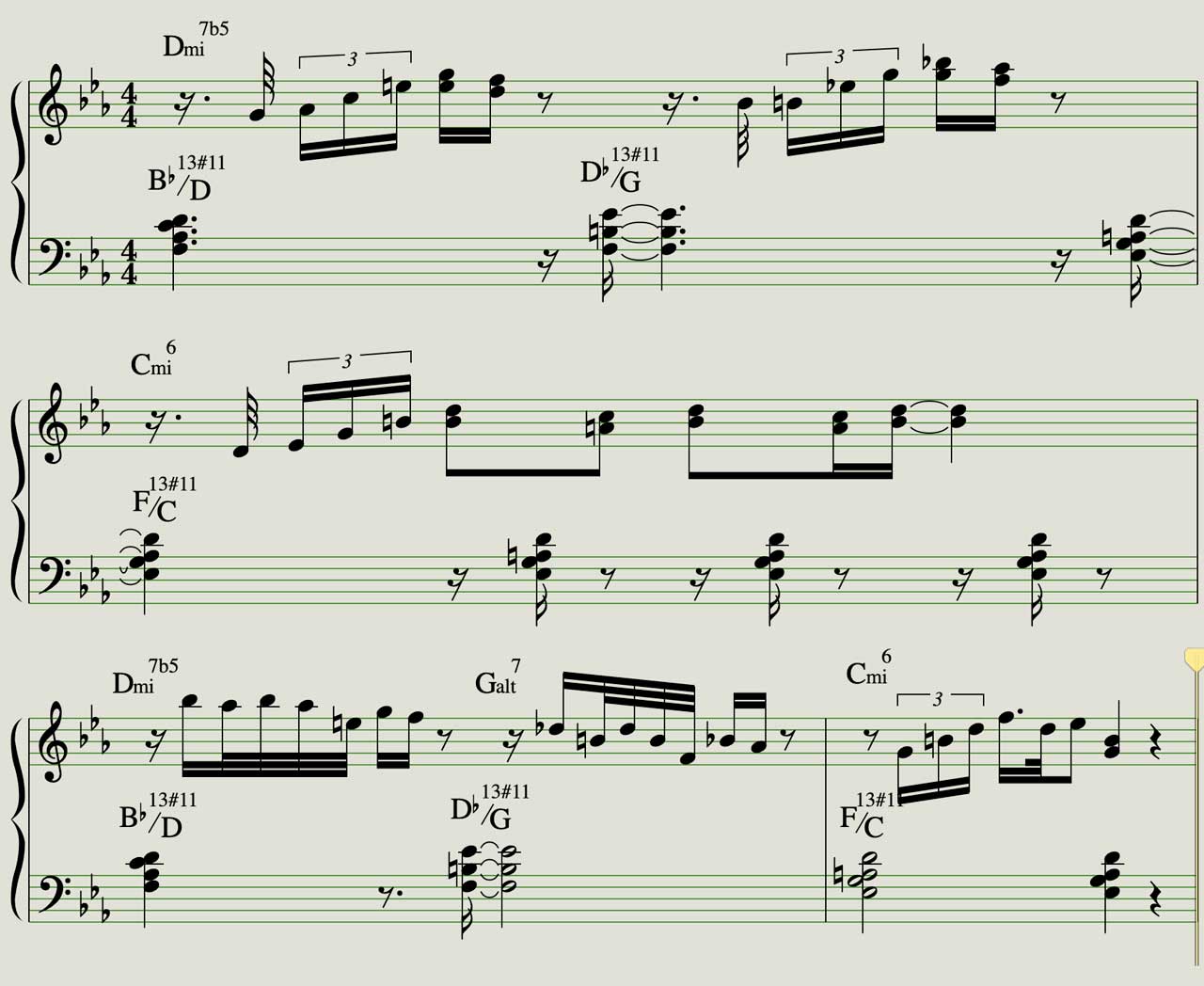What you will learn
In this post, you will discover a great way of improvising and comping over a jazz cadence in minor more easily.
If there is one chord progression a jazz musician wants to master, it is undoubtedly the jazz cadence in all minor and major keys.
What's the big idea?
The idea is to use the same chord type and scale for all three cadence chords.
In the following short video, I demonstrate how this works. Enjoy!
The term "harmonic cadence" explained
In classical music, a harmonic cadence refers to a chord progression consisting of the tonic, subdominant, and dominant chords (found on degrees 1, 4, and 5). These chords represent the three basic harmonic functions in the diatonic system of Western music theory. In jazz, the chord based on degree 4 is substituted for the chord based on degree 2.
In the key of C minor, the harmonic cadence chords in classical music and jazz compare as follows:
Classical cadence:
4, 5, 1
Fmi, G7, Cmi
Jazz cadence:
2 5 1
Dmi7(b5), G7(b9), Cmi
Simple is better - and here is how
When I first practiced improvising and comping over the jazz cadence in minor, I practiced a different scale for each chord. I could do it, but a lot of thinking was involved, as shown below.

There is a simpler way - And here is how!
One day, while transcribing a Bill Evans solo, I noticed that he transposes phrases a minor third up between the 2mi7(b5) and the V7(Alt) chord. Sometimes, he does the same thing between the second (IImi7b5) and third (V7) chords, where the transposition is a major third up instead. This made me wonder about why this works so well. I thought there had to be some sound theoretical concept behind it. After analyzing his solos further, I discovered something genuinely fascinating. The scale he used for the half-diminished chord was the sixth mode of the melodic minor scale, and the one he used for the V7(Alt) was the seventh mode of the melodic minor scale. For the tonic chord, he used the melodic minor scale.
Here is the cool thing about that: Since he uses a melodic minor scale structure as the parent scale for all three jazz cadence chords, he can use the same scale and chord quality for all three, in this case, the 13(#11) chord, only in different keys and modes.
This sounds really complicated and abstract. So let me give you an example of what this looks like in the key of C minor:

How to find the substitution chords
If we want to use this in our playing, we need a quick way to find the three root notes on which our 13(#11) chords are based. Here is my method for doing so, as it applies to the jazz cadence in C minor.
- The root of Bb13(#11), which replaces the Dmi7(b5) chord, is a whole step below C (the tonic).
- The root of Db13(#11), which replaces the G7(Alt) chord, is a half step above C (the tonic).
- The root of F13(#11), which replaces the Cmi6/9 chord, is a perfect 4th above C (the tonic).
So here are the three 13(#11) chords we want to use as the overlayed structure for the C minor jazz cadence chords:
Bb13(#11)/D Db13(#11)/G F13(#11)/C
To find the root notes of the three 13#11 substitution chords, memorize this:

An other useful tip
Since all three chords have the same scale and chord quality, using the same lick or phrase is possible over all three jazz cadence chords. All we need to do is transpose it accordingly. When you listen to Bill, you will hear him do this often!
It's also a great way of practicing the same lick starting on different notes, a skill every improviser should aspire to master.
The following shows the two licks I used at the end of my short video example

If you have any questions or other thoughts on this topic, please share them with our community by commenting below.
Please also consider signing up for our newsletter in the footer section so we can keep you in the loop about other excellent piano-related tips.
